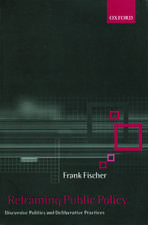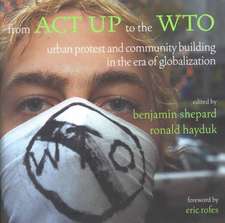Cleaning Up the Great Lakes: From Cooperation to Confrontation
Autor Terence Kehoeen Limba Engleză Hardback – 19 aug 1997
Before the 1960s, state regulatory officials responsible for protecting Great Lakes water quality followed a policy of "cooperative pragmatism" that was based on the principles of voluntarism, informal cooperation, and localism. During the 1960s, however, this regulatory system splintered as a result of increasing levels of pollution, the rise of environmentalism, and entrepreneurial politics at the federal level. Grass roots protest activity in the major cities of the Great Lakes Basin, supported by local media coverage and sympathetic members of Congress, led to federal intervention to "save our lakes."
Gradually, a new system of regulation emerged that was characterized by formal procedures, legal conflict, and national standardization. In the past, state regulators had based individual waste treatment requirements on the receiving water's primary uses, economic considerations, and other local factors. But new federal legislation established a national discharge permit program that forced regulators to seek the maximum treatment feasible, as determined by officials in Washington.
Environmental and policy history intersect in this unique case study of national water pollution control policy during the seminal decades of environmental activism. Kehoe uses events in the Great Lakes region to investigate broader changes in American public policy during the era of public interest that extended from the late 1960s through the early 1970s. These include the nationalization of policy, the breakdown of trust in institutions, and a greater reliance on formal legal mechanisms to resolve conflict and perceived injustices.
Cleaning Up the Great Lakes will appeal to readers who seek to understand the changing nature of public policy in recent American history. This compelling book will also interest those wishing to learn about the Great Lakes ecosystem, environmental issues, and environmental regulation.
Gradually, a new system of regulation emerged that was characterized by formal procedures, legal conflict, and national standardization. In the past, state regulators had based individual waste treatment requirements on the receiving water's primary uses, economic considerations, and other local factors. But new federal legislation established a national discharge permit program that forced regulators to seek the maximum treatment feasible, as determined by officials in Washington.
Environmental and policy history intersect in this unique case study of national water pollution control policy during the seminal decades of environmental activism. Kehoe uses events in the Great Lakes region to investigate broader changes in American public policy during the era of public interest that extended from the late 1960s through the early 1970s. These include the nationalization of policy, the breakdown of trust in institutions, and a greater reliance on formal legal mechanisms to resolve conflict and perceived injustices.
Cleaning Up the Great Lakes will appeal to readers who seek to understand the changing nature of public policy in recent American history. This compelling book will also interest those wishing to learn about the Great Lakes ecosystem, environmental issues, and environmental regulation.
Preț: 320.74 lei
Nou
Puncte Express: 481
Preț estimativ în valută:
61.39€ • 66.71$ • 51.60£
61.39€ • 66.71$ • 51.60£
Carte tipărită la comandă
Livrare economică 21 aprilie-05 mai
Preluare comenzi: 021 569.72.76
Specificații
ISBN-13: 9780875802251
ISBN-10: 0875802257
Pagini: 262
Dimensiuni: 152 x 229 x 25 mm
Greutate: 0.61 kg
Ediția:1
Editura: Northern Illinois University Press
Colecția Northern Illinois University Press
ISBN-10: 0875802257
Pagini: 262
Dimensiuni: 152 x 229 x 25 mm
Greutate: 0.61 kg
Ediția:1
Editura: Northern Illinois University Press
Colecția Northern Illinois University Press
Recenzii
"A fascinating synthesis.... Kehoe helps shed light on a subject complex almost beyond imagination."
—Journal of American History
"An excellent perspective on the early environmental history of the Great Lakes."—Journal of Illinois History
"A good book, well-written and carefully researched."—Environmental History
—Journal of American History
"An excellent perspective on the early environmental history of the Great Lakes."—Journal of Illinois History
"A good book, well-written and carefully researched."—Environmental History
Cuprins
Table of Contents
Introduction
Part One: Cooperation and Consensus
1 "A Matter of Reasoned Cooperation": Water Pollution Control through the Early 1960s
Part Two: The System Challenged, 1960–1968
2 "You Alone Have the Answer": The Path to Federal Intervention in the Great Lakes Region, 1960–1965
3 Standards and Deadlines: The Changing Nature of Water Pollution Control, 1965–1968
Part Three: The Breakdown of Cooperation, 1969–1972
4 The New Regulation: Organizational Change and Legal Confrontation
5 The Burden of Proof: Pollution Control and Scientific Uncertainty
Epilogue: The 1970s and Beyond
Notes
Selected Bibliography
Index
Part One: Cooperation and Consensus
1 "A Matter of Reasoned Cooperation": Water Pollution Control through the Early 1960s
Part Two: The System Challenged, 1960–1968
2 "You Alone Have the Answer": The Path to Federal Intervention in the Great Lakes Region, 1960–1965
3 Standards and Deadlines: The Changing Nature of Water Pollution Control, 1965–1968
Part Three: The Breakdown of Cooperation, 1969–1972
4 The New Regulation: Organizational Change and Legal Confrontation
5 The Burden of Proof: Pollution Control and Scientific Uncertainty
Epilogue: The 1970s and Beyond
Notes
Selected Bibliography
Index
Descriere
Before the 1960s, state regulatory officials responsible for protecting Great Lakes water quality followed a policy of "cooperative pragmatism" that was based on the principles of voluntarism, informal cooperation, and localism. During the 1960s, however, this regulatory system splintered as a result of increasing levels of pollution, the rise of environmentalism, and entrepreneurial politics at the federal level. Grass roots protest activity in the major cities of the Great Lakes Basin, supported by local media coverage and sympathetic members of Congress, led to federal intervention to "save our lakes."
Gradually, a new system of regulation emerged that was characterized by formal procedures, legal conflict, and national standardization. In the past, state regulators had based individual waste treatment requirements on the receiving water's primary uses, economic considerations, and other local factors. But new federal legislation established a national discharge permit program that forced regulators to seek the maximum treatment feasible, as determined by officials in Washington.
Environmental and policy history intersect in this unique case study of national water pollution control policy during the seminal decades of environmental activism. Kehoe uses events in the Great Lakes region to investigate broader changes in American public policy during the era of public interest that extended from the late 1960s through the early 1970s. These include the nationalization of policy, the breakdown of trust in institutions, and a greater reliance on formal legal mechanisms to resolve conflict and perceived injustices.
Cleaning Up the Great Lakes will appeal to readers who seek to understand the changing nature of public policy in recent American history. This compelling book will also interest those wishing to learn about the Great Lakes ecosystem, environmental issues, and environmental regulation.
Gradually, a new system of regulation emerged that was characterized by formal procedures, legal conflict, and national standardization. In the past, state regulators had based individual waste treatment requirements on the receiving water's primary uses, economic considerations, and other local factors. But new federal legislation established a national discharge permit program that forced regulators to seek the maximum treatment feasible, as determined by officials in Washington.
Environmental and policy history intersect in this unique case study of national water pollution control policy during the seminal decades of environmental activism. Kehoe uses events in the Great Lakes region to investigate broader changes in American public policy during the era of public interest that extended from the late 1960s through the early 1970s. These include the nationalization of policy, the breakdown of trust in institutions, and a greater reliance on formal legal mechanisms to resolve conflict and perceived injustices.
Cleaning Up the Great Lakes will appeal to readers who seek to understand the changing nature of public policy in recent American history. This compelling book will also interest those wishing to learn about the Great Lakes ecosystem, environmental issues, and environmental regulation.












